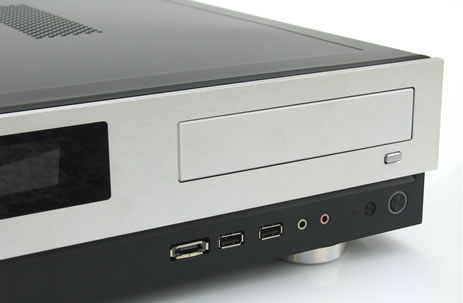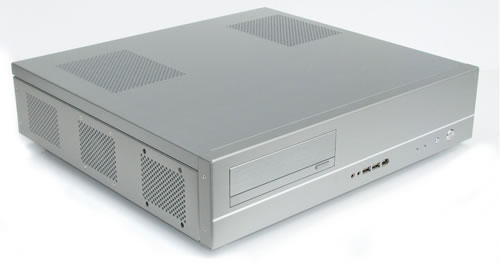Impressions After Thermal Tests
Before wrapping things up there are a few extra thoughts I wanted to share about each case concerning thermal performance, installation process, and general usage.
The Antec MicroFusion performed far worse than we had been expecting. Although the results recorded with the fans set to their maximum speed were respectable, I can't imagine anyone wanting to use the case making that much noise, even at the medium setting. Once set to low the operating volume was acceptable, unfortunately the operating temperatures were not.
Installing hardware into the Antec MicroFusion was also a little more difficult than we would have liked, particularly installing/removing a 3.5" hard drive. Still, for a slim line case the Antec MicroFusion does a reasonably good job of using what little space it has wisely.

After looking at other offerings, it became evident that the GlacialTech Altair A381 is not the most well thought out HTPC case we have come across. If the power supply was on the opposite side of the case and the motherboard was moved down slightly, there would've been more room within the case. The left side fan is almost completely blocked by the power supply cable and therefore moves very little air.
Hiding the power cables is really difficult in the Altair A381. Also like the Antec MicroFusion, the Altair A381 proved to be a poor performer in terms of temperatures, and we blame this on the lack of ventilation. The operating volume of the Altair A381 was acceptable however.
The Lian-Li PC-C37 was probably the best case to work with. There are loads of room to hide excess cables that will not affect cooling and the installation and removal of other components. In fact, we managed to install a high-end 700 watt power supply with loads of extra long cables into the PC-C37 and it still seemed less crammed than some of the other cases in this comparison. The cooling performance of the PC-C37 was also very acceptable, especially considering this case was nearly silent.

Another clean case was the Silverstone LC13B-E, which was also able to accommodate for the 700-watt power supply. Of course, the LC13B-E is a much bigger case than the Antec, GlacialTech, or Lian-Li, so there are obvious differences and the room inside was more generous to begin with. Still we feel Silverstone has done an excellent job of using the available space and for the most part this was an easy case to work with. The cooling performance was quite good, too, especially given the quiet operating volume.
The big and heavy Thermaltake DH104 proved to be an excellent performer, delivering the best results right across the board. The installation process was okay, despite a few minor flaws. Because the case is so big, hiding cables was not a problem, though we did feel that Thermaltake failed somewhat to make the best use of this space. But again, the performance was there and the operating volume was very low.